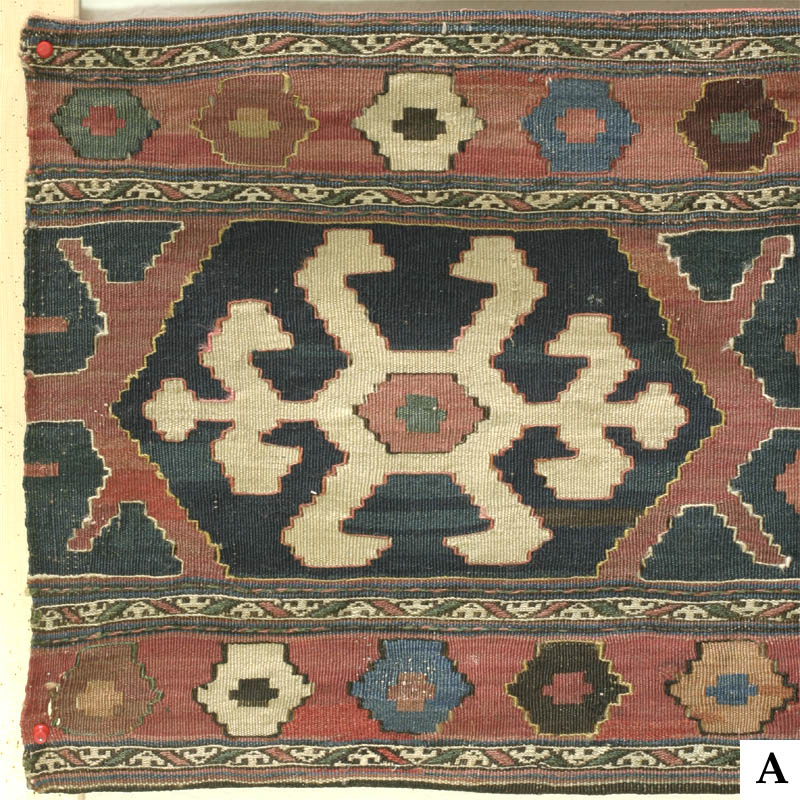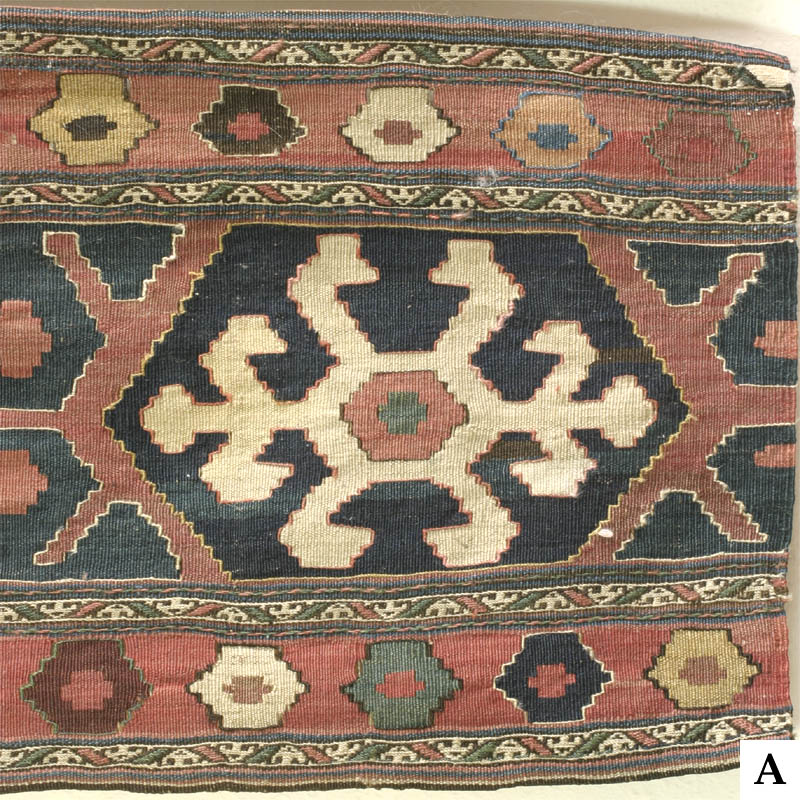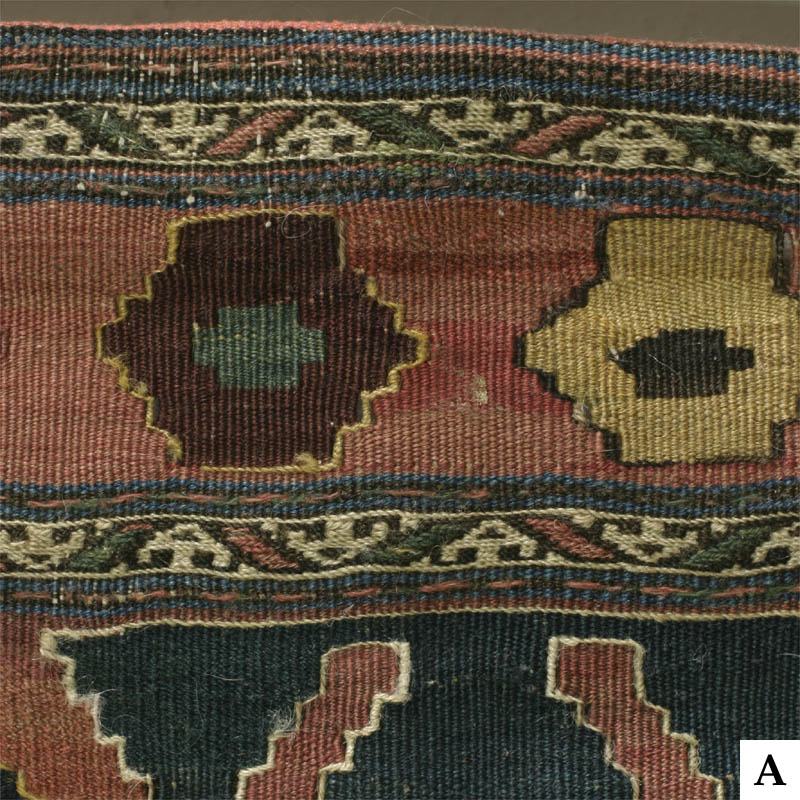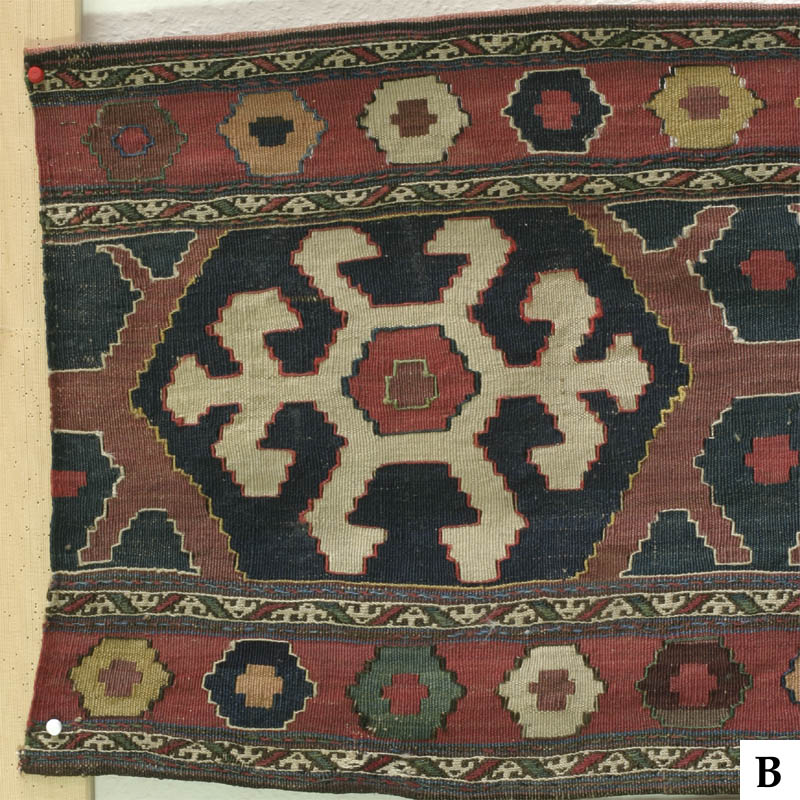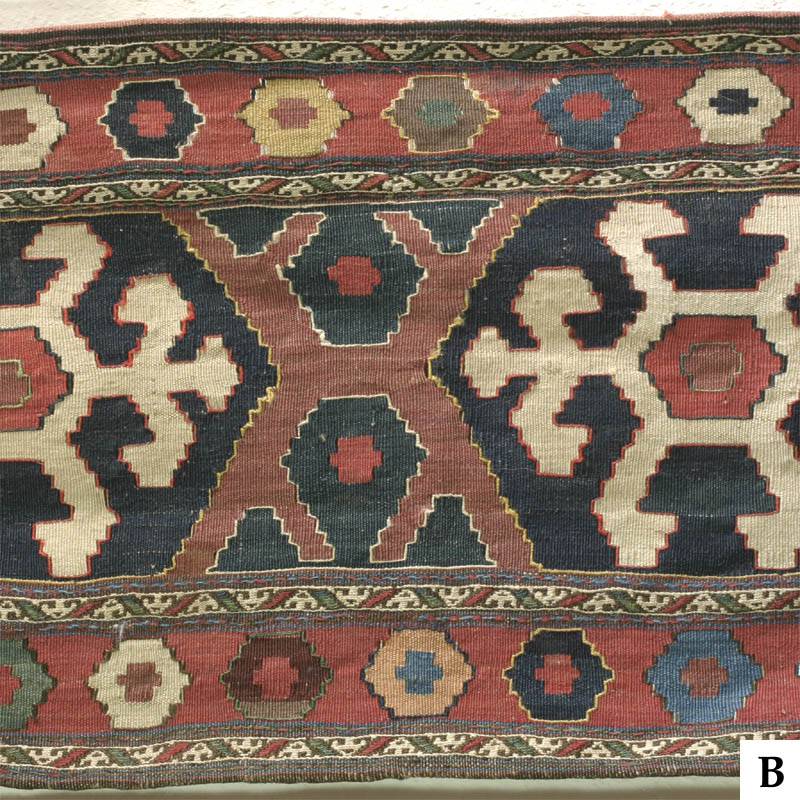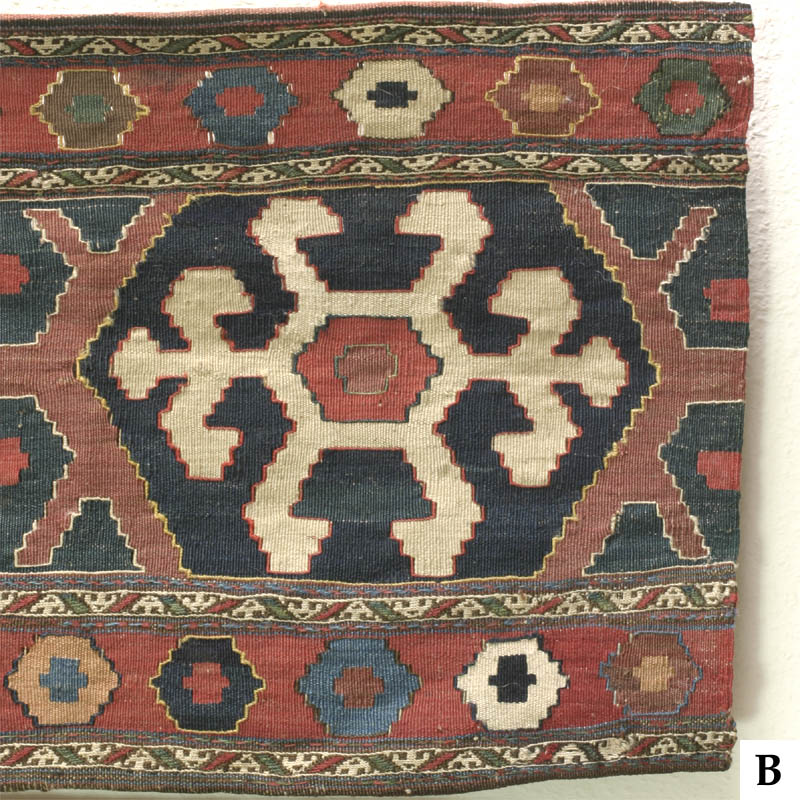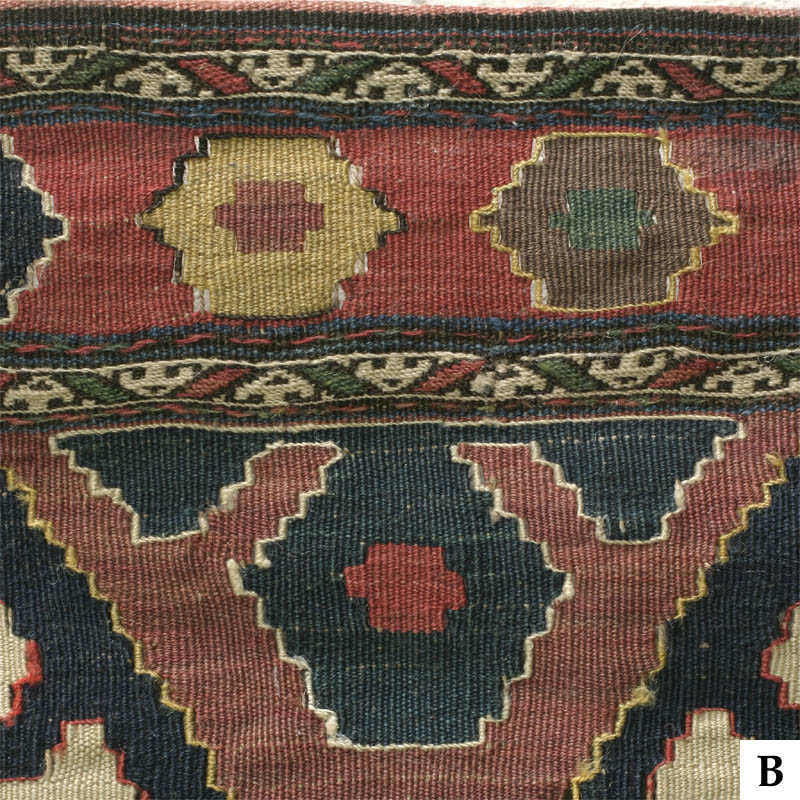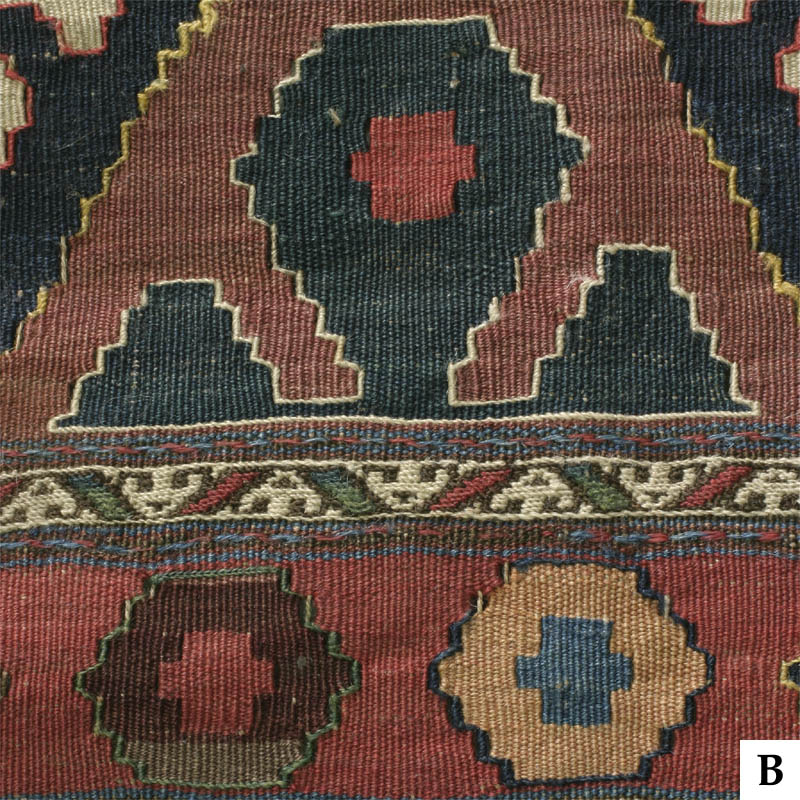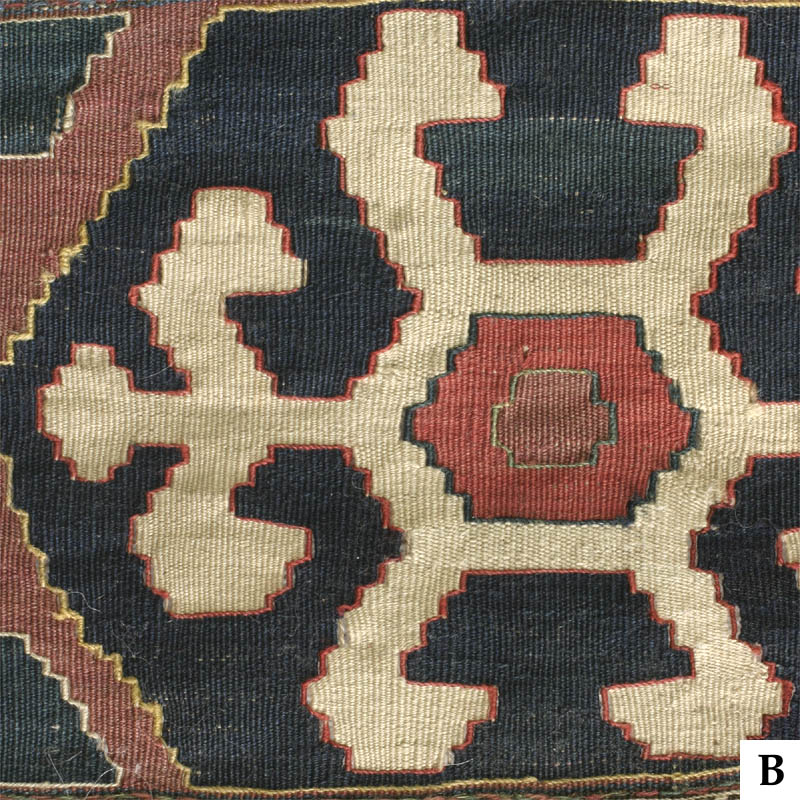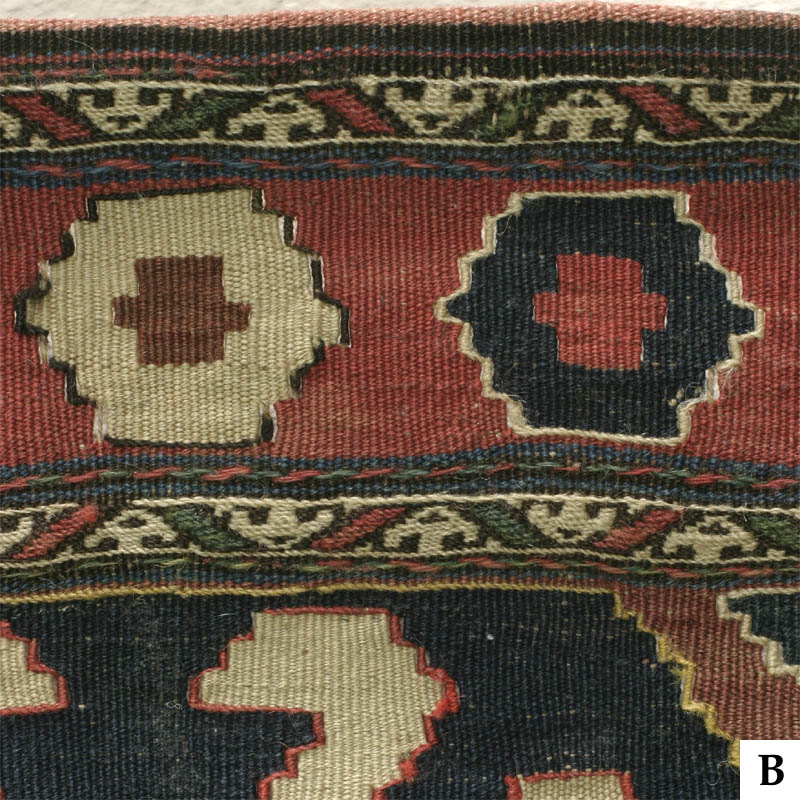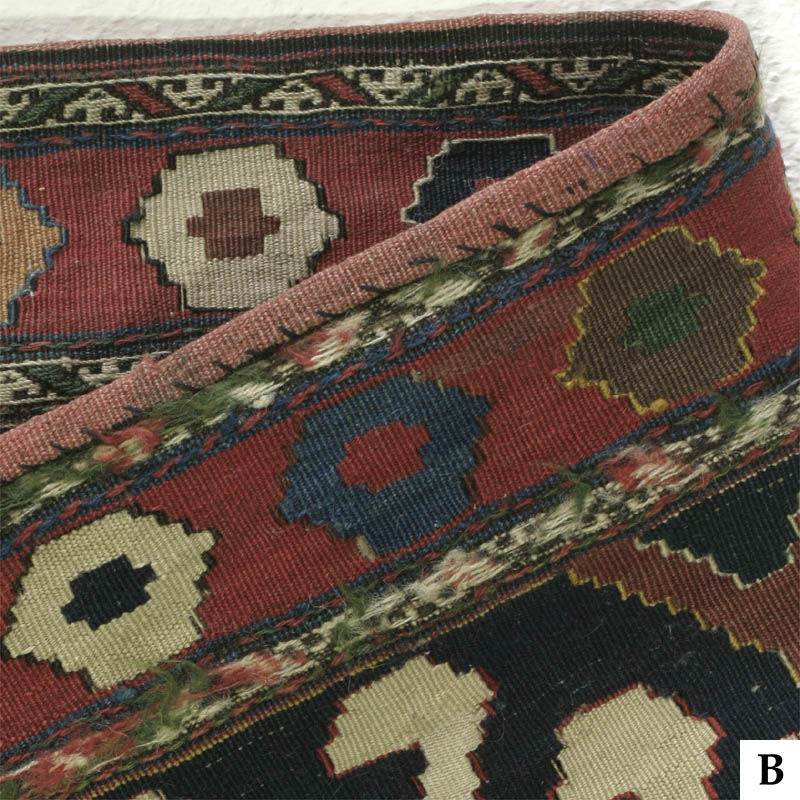Beautiful pair of Shahsevan or Caucasian slit-tapestry mafrash side panels in good condition. They were once part of the same mafrash (a rectangular storage and transport bag that was used by Nomads in Persia and the Caucasus and Central Asia). I therefore offer these together here.
I do not know enoguh about these items to attribute them more precisely than saying 'Shahsavan ' or 'Caucasian'. The Shahsavan tribe used to move freely between NW Persia and the Caucasus. Many typical Shahasavan mafrashes are however more intricate than this one which make sa bold and simple statement and shows a lot of variation in the size and shape of elements.
Each side panel is dominated by bold hexagonal medallions in with hooked white forms on dark blue ground (a hexagon with huge hooks in its corners and horizontal pedants ending in double hooks and a central extension). In the centre of these hooked forms sits another smaller red hexagon that itself contains a green hexagonal centre in one of the panels, and a purple centre outlined in green in the other.
The central band containing these medallions is framed by a top and bottom row of coarse slit-tapestry hexagons in various colours. These rows are themselves framed by two fine bands in a regular weft-substitution pattern which may be read as reciprocal arrows or a red-green zig-zag line with brown ornamentation in the interstices.
The Mafrash side panels measure 93 x 47cm and 90 x 48cm (about 3ft. x 1ft.6in.). Slit tapestry with single warp-wrapping for the thin outlining of design elements. I very dense and sturdy weave, yet very flexible not least because of the slits in the weave. I guess the outlining in single warp wrapping not only emphasises the form but also protects and thereby strengthens the single warps that must be the weakest points in the stepped slit tapestry design.
I already mentioned the narrow bands in weft-substitution weave that flank the top and bottom hexagon border.
The colours look all natural, I cannot see any suspicious dye. They are rather muted, mellowed through the impact of sunight (somewhat stronger on the inside). There is a lot of pleasant abrash in the dark blue medallion ground (even some brown put in here and there) and in the red ground of borders and central band. Various shades of madder red, nice greens including the beautiful teal green of the elements sitting between the medallions, a good yellow, light blue, a brownish purple, dark brown, a warm off-white, and a good mellow orange (not just madder-based—probably yellow overdyed with a weak madder bath).
Good condition, I can see little wear and no repairs.
